Val di Non, Italy’s Apple Eden Where The Fruit Isn’t Forbidden
This website uses affiliate links which may earn a commission at no additional cost to you. As an Amazon Associate I earn from qualifying purchases.
Updated: 21st February 2024
“Apples, lots and lots and lots of apples”, I quickly typed into my phone in response to my friend’s question about how Val Di Non, a region of Trentino, Italy, was treating me. I adjusted my hard hat before adding an afterthought: “Oh, and castles. Lots of them, too”.
The message lingered unsent. I was deep inside a cave without any phone service. But these weren’t just any old caves. This artificial set of tunnels was hacked deep into the side of the mighty Dolomites. Their purpose? One of the most ingenious storage halls I’d ever witnessed. What were the air-tight chambers stacked high with? Apples. Thousands and thousands of sweet Melinda apples.
Incredibly, some of them are stored here for months. Not that you’d have a clue by the time you see them in your local supermarket. This genius refrigeration system can keep these crunchy orbs of five-a-day goodness nearly as fresh as the day they were picked.
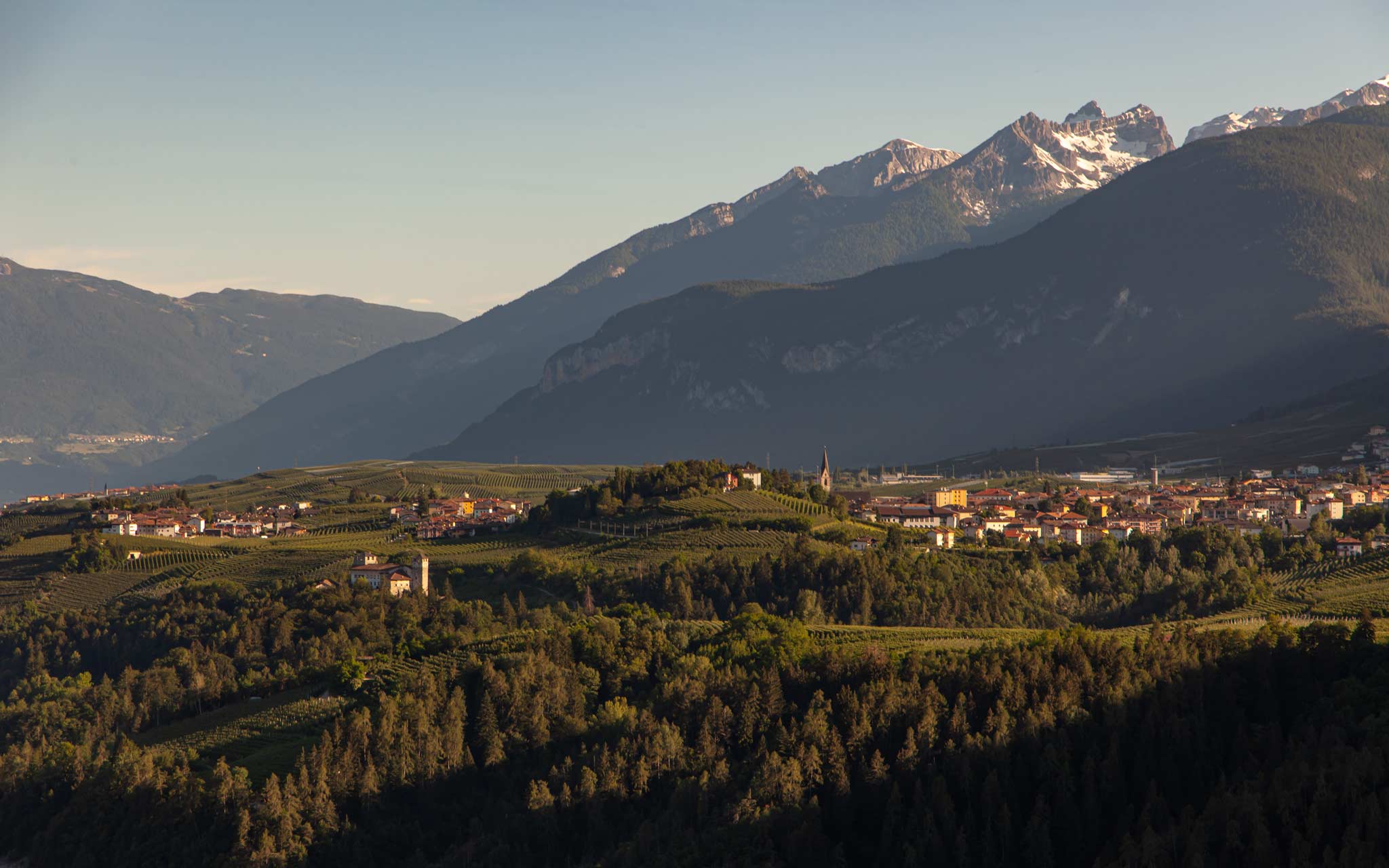
As Val di Non had taught me on the journey to this quirky storage facility, apples can also be downright gorgeous. After leaving the lake-heavy region of Valsugana, I was quickly mesmerised by the rows and rows of terraced vineyards in the distance.
“Those aren’t vineyards,” Marco, my guide, chuckled. “They’re apples.”
Now, I promise this isn’t going to be an essay on apples. However, after a tour of the mind-boggling, former-mine storage caves of the Melinda Apple Factory, I feel more than qualified to write one. But I merely want to set the scene. Val di Non is essentially a giant orchard. A lush land of low-slung mountains, plentiful castles and… abundant apples.
Why it’s not called the Valley of Apples is anyone’s guess. But there I was, pressed against the windows with my fellow travellers, utterly astonished like I’d never seen a fruit before. “I just can’t believe they are apples”, Vicky calls from behind me. “Who knew apples could be so beautiful?” someone coos from upfront. I add my equally profound thoughts to the conversation: “I want an apple”. A few days later, I would have been fed all the apples anyone could ever wish for.
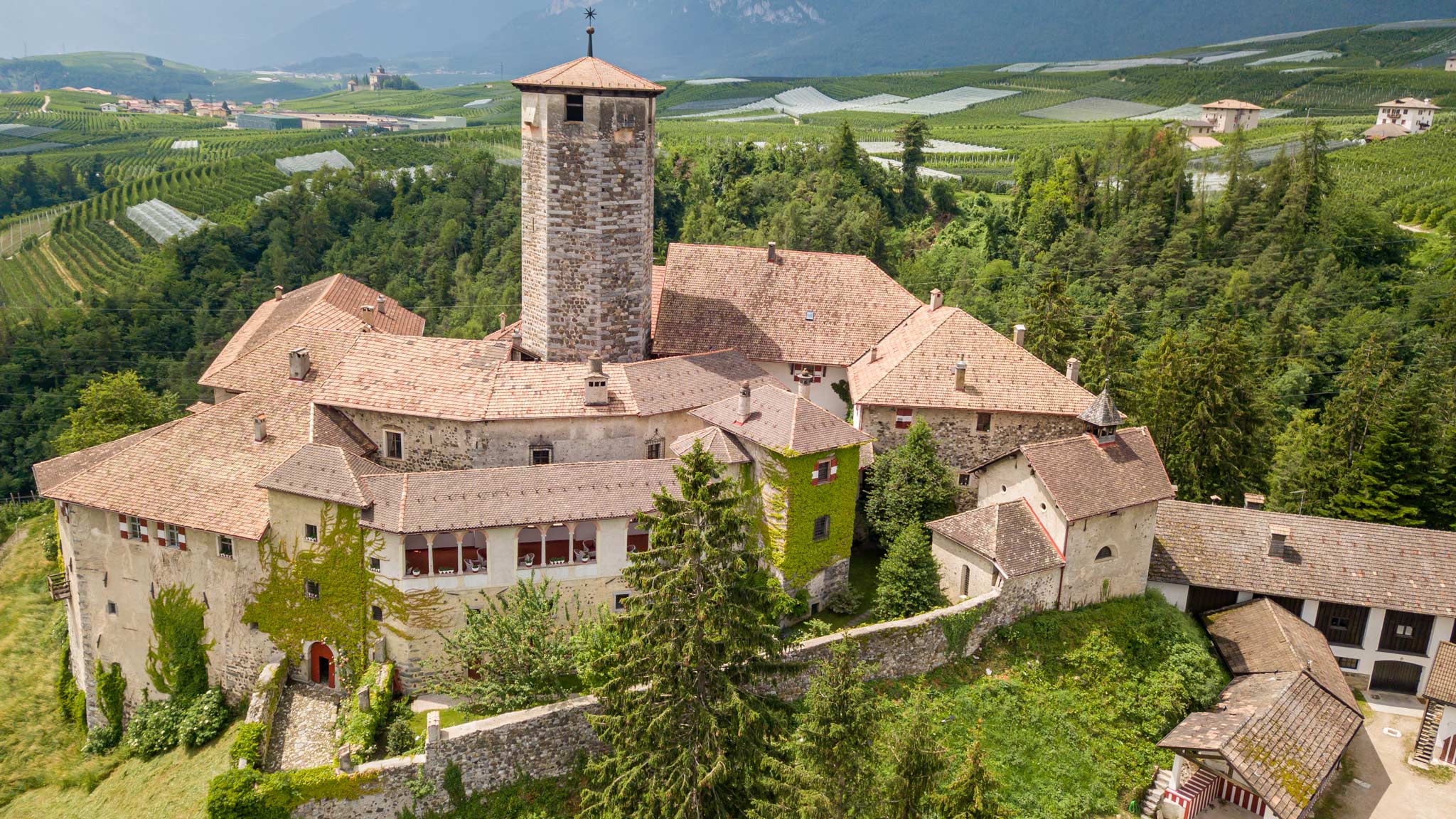
From apples to aristocrats
The Trentino region has been one of my favourite, more hidden parts of Italy for years. On my first visit, I fell madly in love with the pocket-sized regional capital, Trento. Not yet tourist-laden, the northern Italian city’s streets and squares of frescos and culture-led events were enchanting. Then I ventured to the fjord-like Lake Levico in Valsugana, where I learnt to SUP gliding above bottles of Trento Doc – the region’s famed sparkling wine – ageing at the bottom of the lake and became even more smitten.
And now I was back for round three. This time to explore Val Di Non. It seems these spectacular valleys remain relatively unsung as most visitors to Trentino head straight to the Dolomites. Whether it’s to ski or simply marvel at some of Mother Nature’s most exceptional work. But while these stupendous ridges are worthy of anyone’s time, the charming small towns and villages, medieval castles, and indeed the apples and orchards of the region also deserve more than a fleeting visit.
The first friendly, if somewhat nonchalant, character we met in Val Di Non was that of a Count, who personally toured us around one of the many castles in the region. But unlike other tour guides, this was actually his castle home. Over a couple of hours, we trailed the nobleman as he recounted tales of old, prodded antiquities with his cane, puffed out historical facts – Castel Valer boasts an octagonal turret, apparently something of a rarity – and occasionally lit up a cigarette as one does when they have guests traipsing through their stately residence.
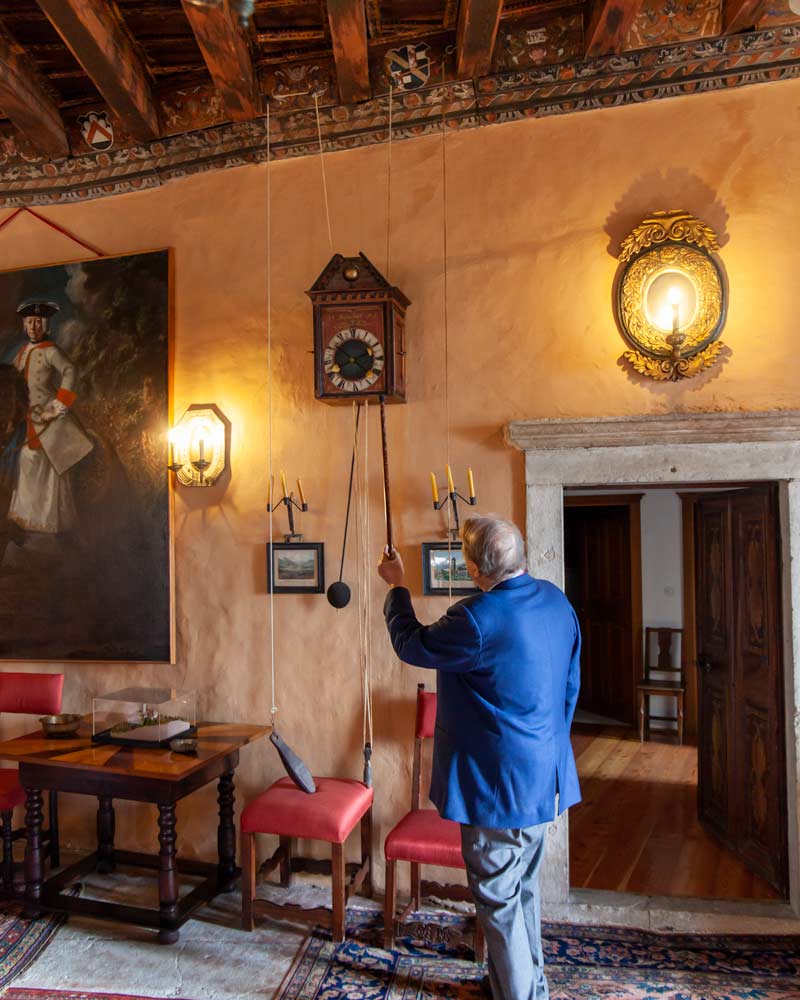
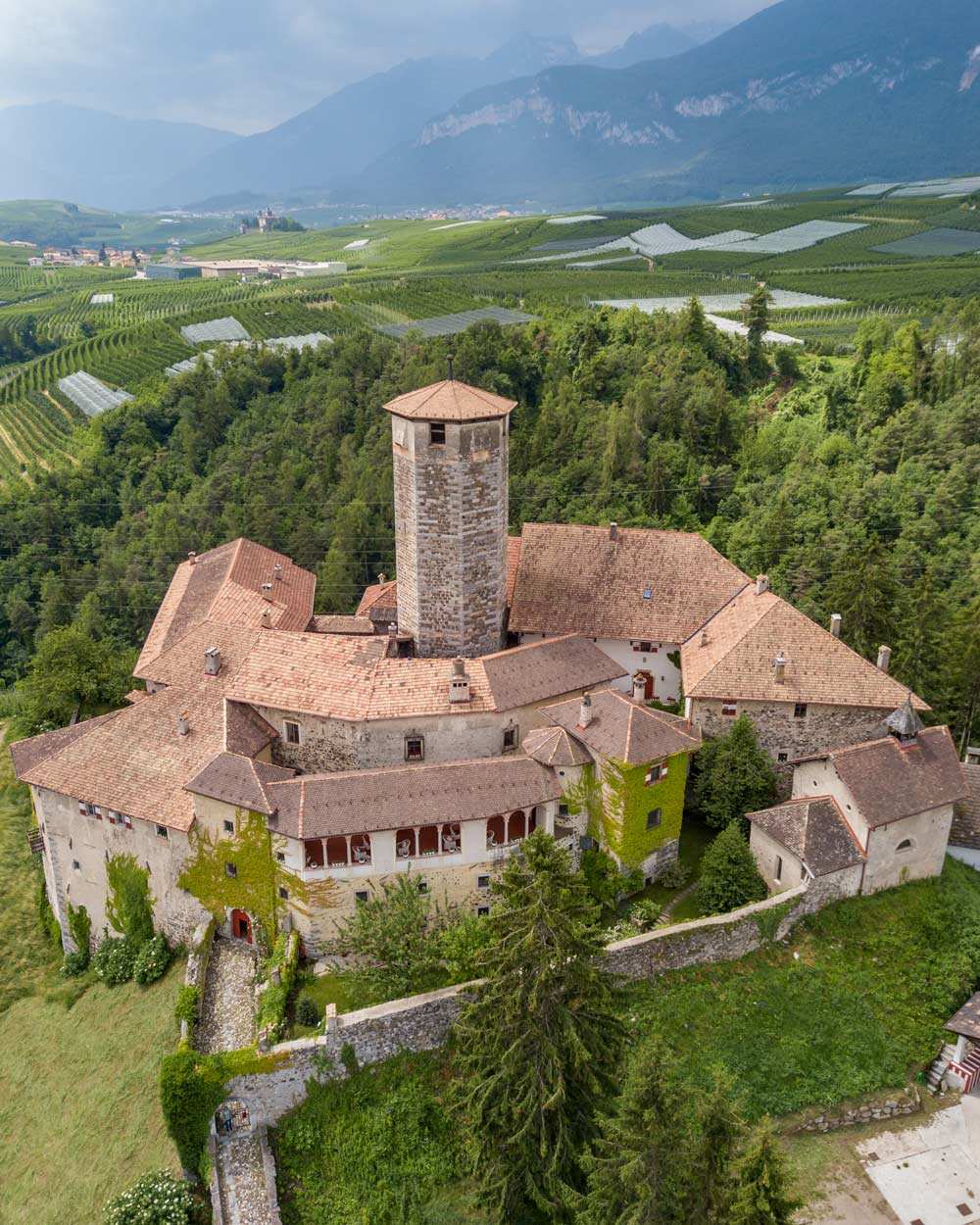
I guess you make the rules when you’re manor of the house. But I don’t think lighting up in the historic dining room as a visitor would be appreciated, especially when there’s a baby grand piano that was once played by Austria’s legendary Mozart himself posing in the corner.
The gardens were splendid, the interiors lavish, and the surrounding landscape was lined with…. well, can you guess? But Val Di Non isn’t all apple juice and ancient castles; it’s also a pristine alpine paradise, as I discovered once I set my eyes on Lago Di Tovel.
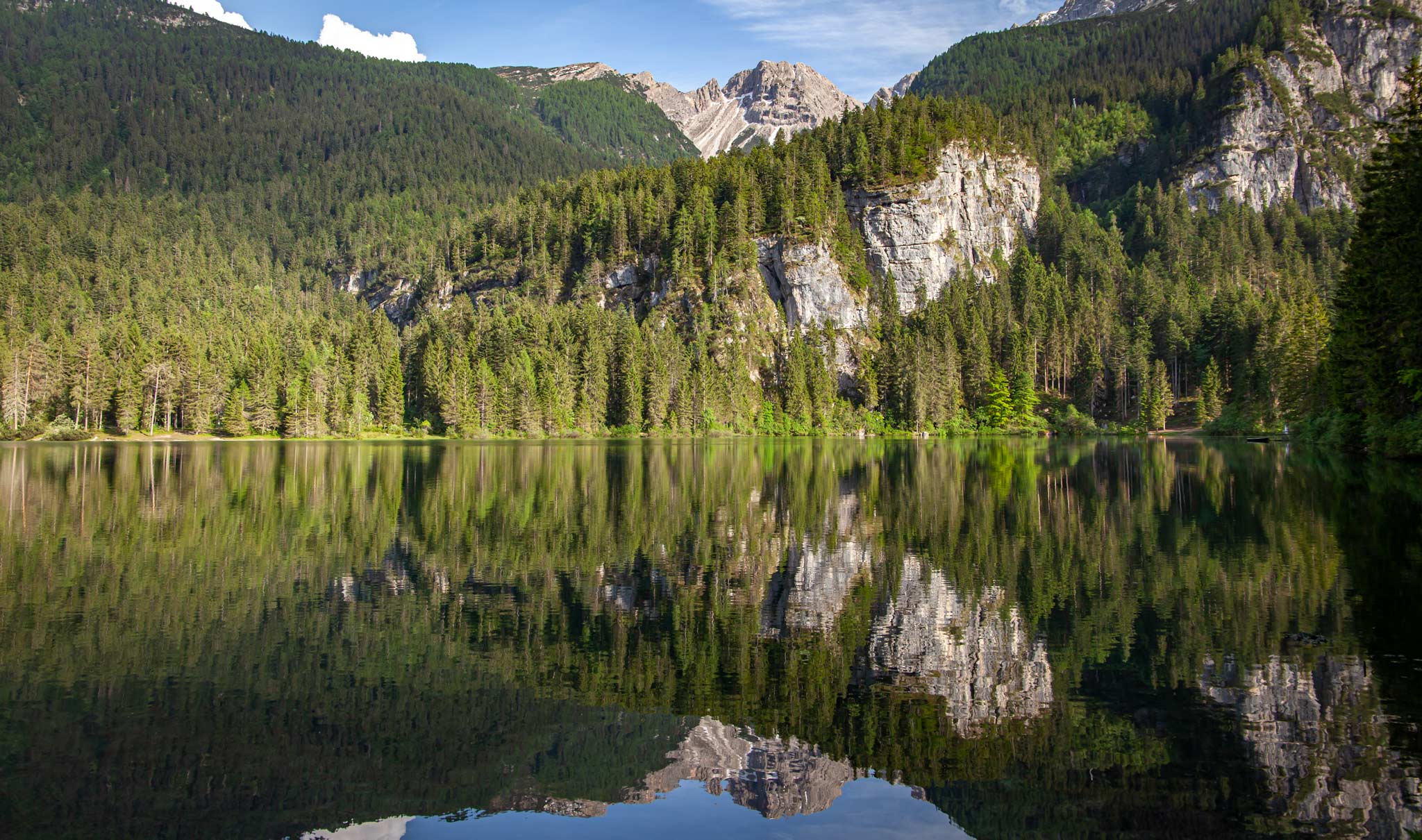
From aristocrats to alpine lakes
Now, I’ve not been to Canada, but British Colombia has long been on my list thanks to its alpine lakes that double as mirrors, and I think I found its European counterpart here.
We’d driven around an hour out of the way, climbing higher and higher through dense pine forests until we parked up at an unassuming visitor centre. Moments later, Vicky and I were shaken from our apple-juice-induced slumber and oohing and aaahing over the kind of lake you’d just assume had been photoshopped if you saw it online.
“Go stand in it. I’ll take a photo,” I called as Vicky shouted back about her feet slowly freezing. Only the brave will swim in Lake Tovel, but anyone can enjoy its views.
We wandered around the lake wide-eyed, stopping to indulge our cameras with way too many photos. We stumbled upon a beautiful cabin-like hotel that we both quickly decided we should have booked. The cravat was we already had a hotel reserved. So, with a heavy heart, we departed from Lago Di Tovel to find our beds.
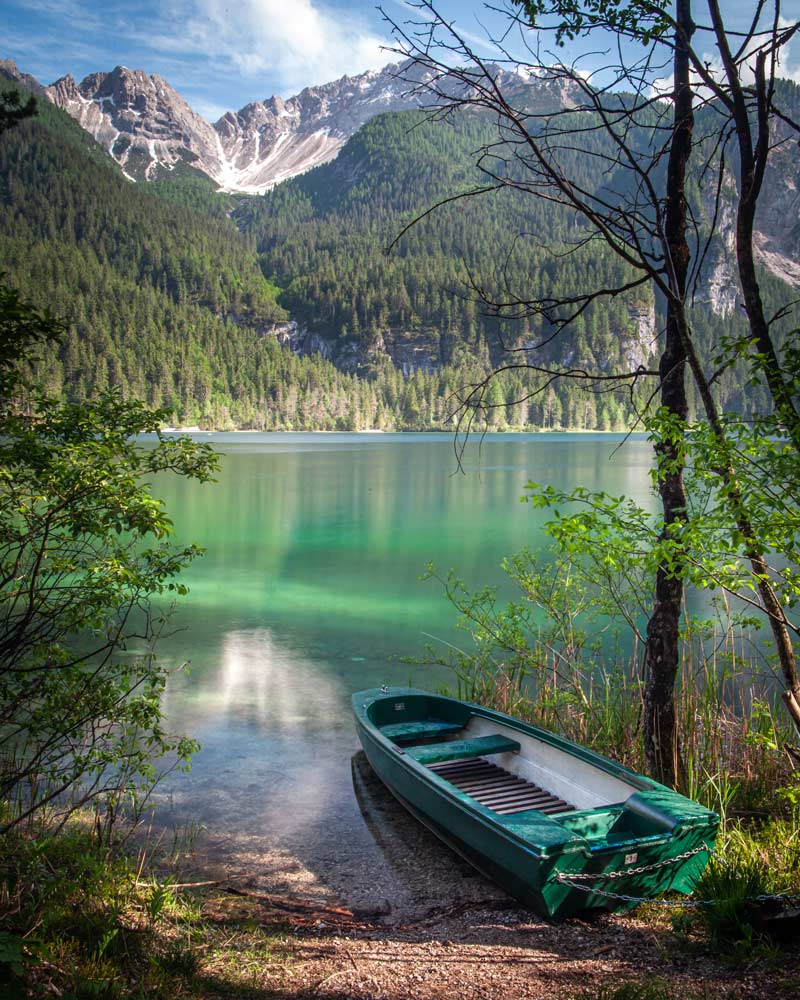
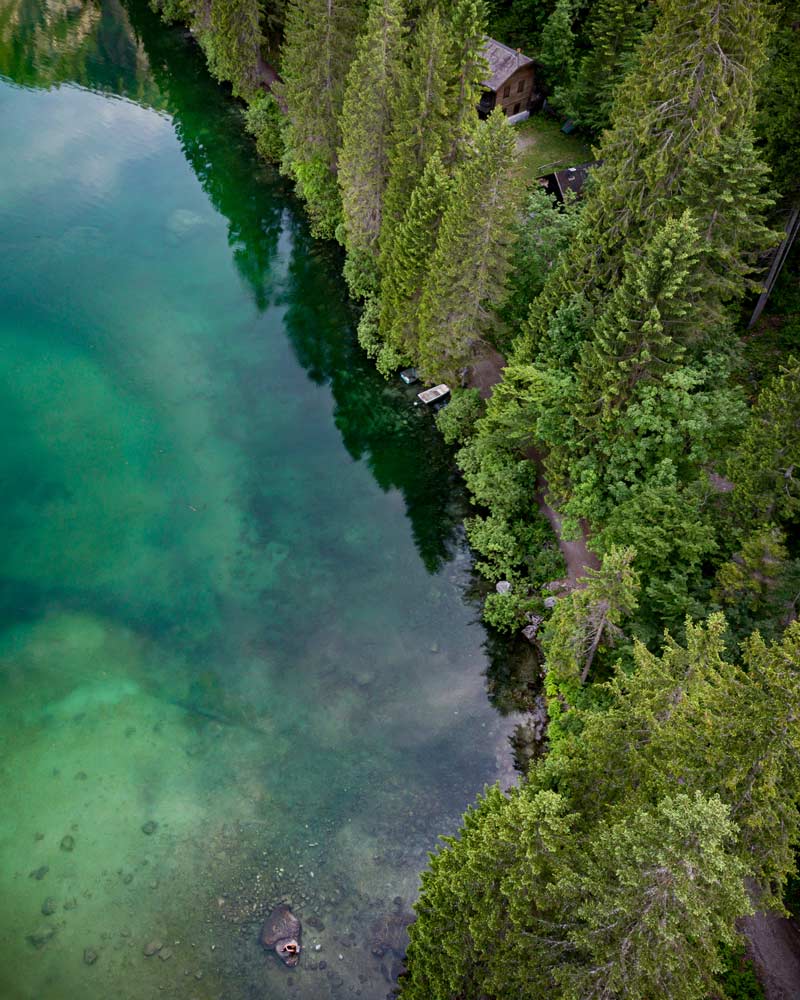
Our hearts weren’t heavy for long as the blackout rollers slowly lifted at the Hotel Viridis to unveil an incredible panorama bathed in the last sun rays of the day. Staring out across Lake Santa Giustina, my heart skipped a beat. Here, mountains collided with the apple terraces, and sun rays reflected off the cerulean water of the lake.
This view was incredible. Made better still with a Hugo – a local cocktail consisting of elderflower and Trento Doc. Soaking up the magnificent views from the terrace, I reflected on the fact I’d never stayed in a bad hotel in Trentino. The region seems to pride itself on the fact that even the most unassuming two or three-star accommodations have prime views, modern amenities, and, of course, fantastic food. The panorama was just as precious the next morning as I enjoyed a cornetto (Italian cream-filled croissant) and my cafe doppio.
While we are on the subject of food – a topic very dear to Italians’ hearts, of course – let me wax lyrically about some of the meals I enjoyed in Val Di Non; surprisingly, all plated without an apple in sight.
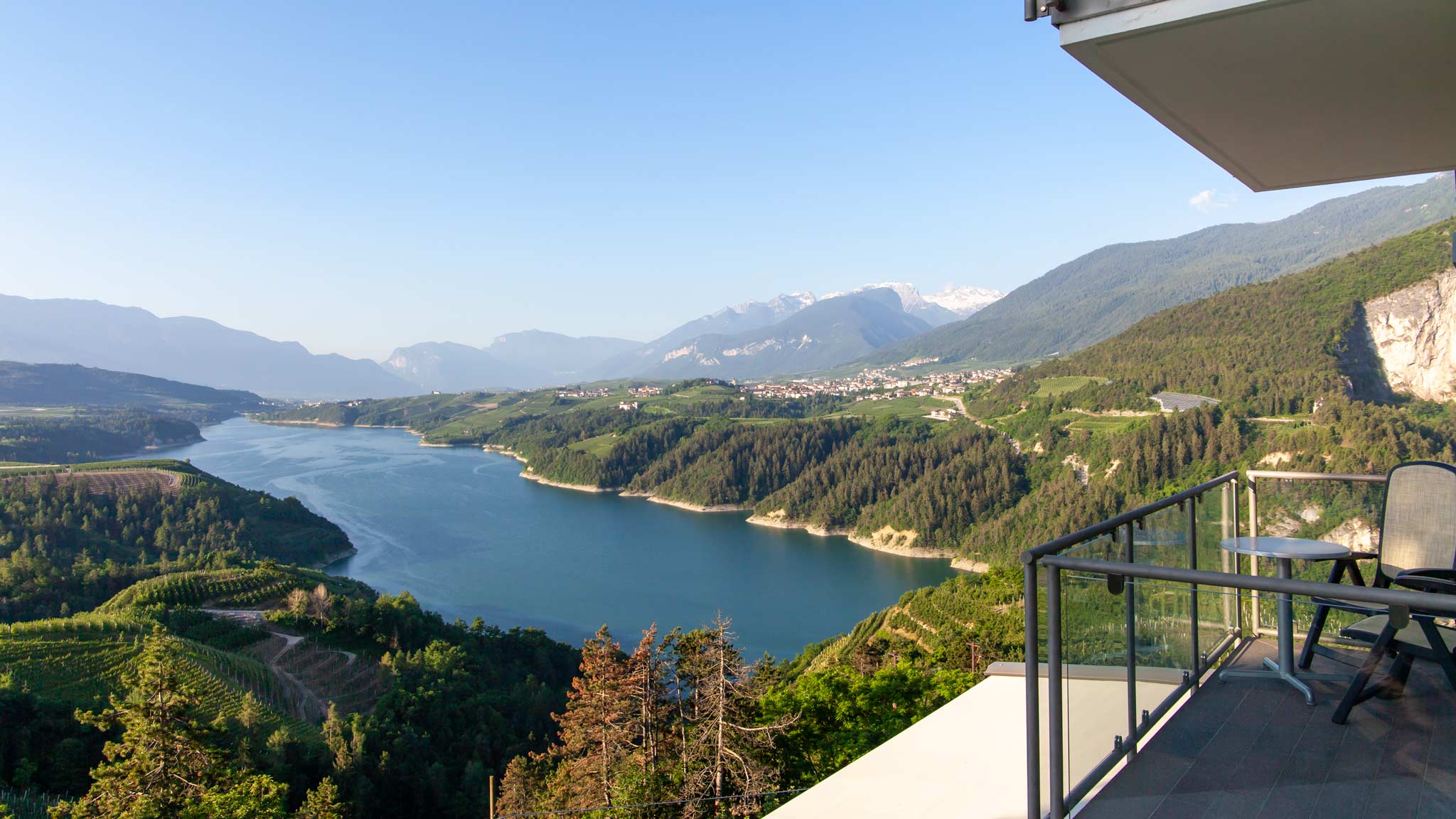
Flavours influenced by Austria rather than apples
At Ristorante La Finlanda, we were spoiled with a lavish four-course set menu in their charming and well-decorated dining room after a cheeky gelato on the terrace. Perfectly cooked steak, creamy mushroom risotto, and an on-point tiramisu delivered all those delicious Italian staples – each served with a Trentino twist.
The next evening at Ristorante La Margherita, we indulged in an outside patio reception overlooking Austrian-like rooftops and spires. Then, inside the wood-clad dining room that looked more like Innsbruck than Italy. Likewise, a three-course meal delivered more Austrian than Italian flavours to the table. This is fairly common, given how the border has changed over the years. For example, in Bolzano, a nearby city, German is the default language, and the valley even has its own endangered dialect: Nones.
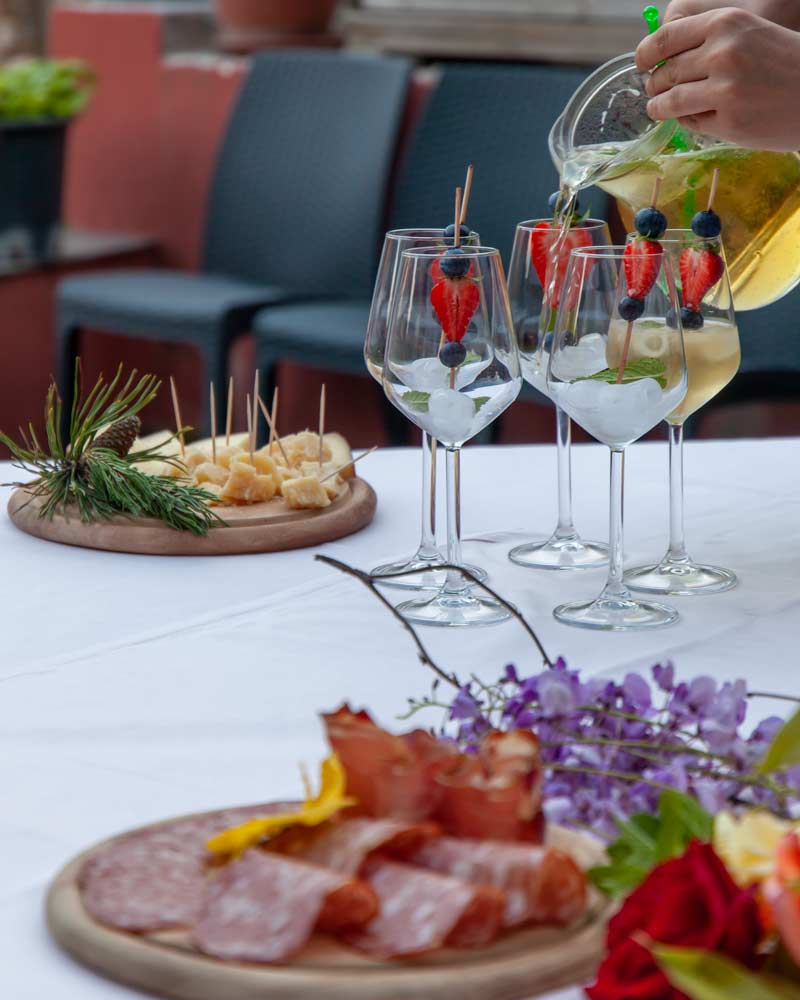
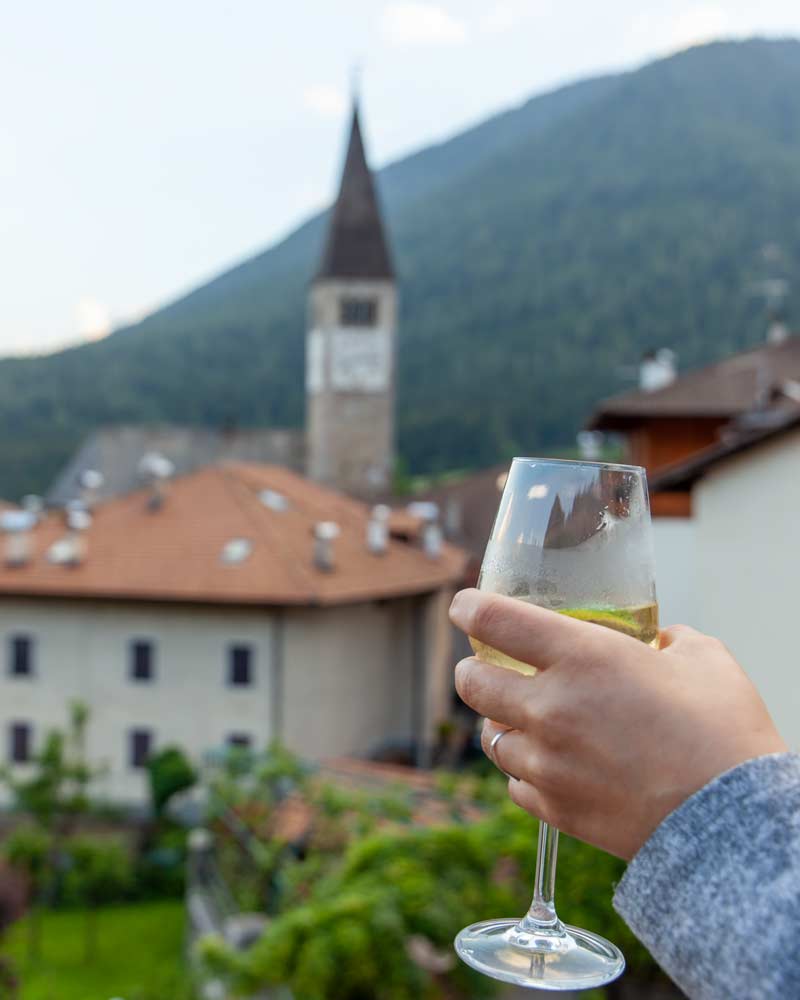
On my three visits to Trentino, my tastebuds have always been treated well. Though I’ll be the first to say that this region doesn’t just (over) fill your stomach, but it fills your soul too.
This is where you come to recharge and reconnect with nature, breaking up those reflective moments with bites of culture, cuisine and history.
The perfect example of combining the three came the next morning as we arrived at the village of Sanzeno.
From the small parking lot, we embarked on a short hike, which took us deeper and deeper into soaring forests. Climbing higher and higher along a path carved into the cliff face, we eventually rose above the canopy. From here, we got our first glimpse of the St Romedius Shrine.
This complex of chapels has been extended over the years, and we descended to them all. Each individual part is connected to the others inside an outer wall. Walking around this unique and remote religious sight was rather poignant in a way that makes little sense as an atheist. Or perhaps it was just the lack of apples?
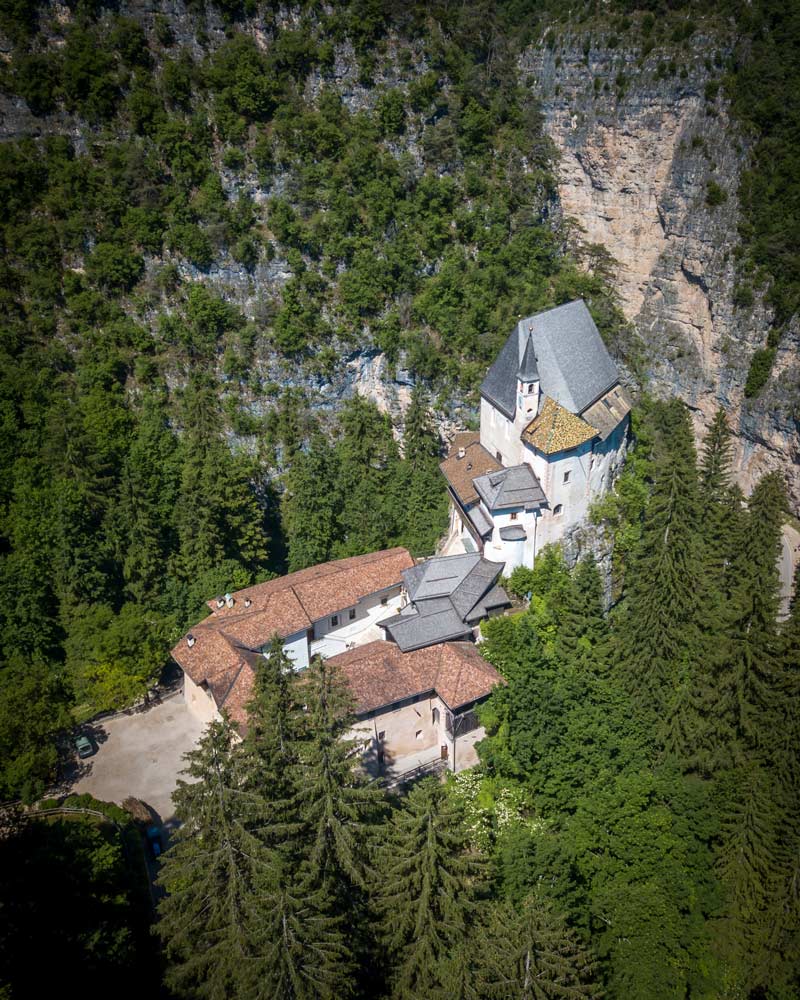
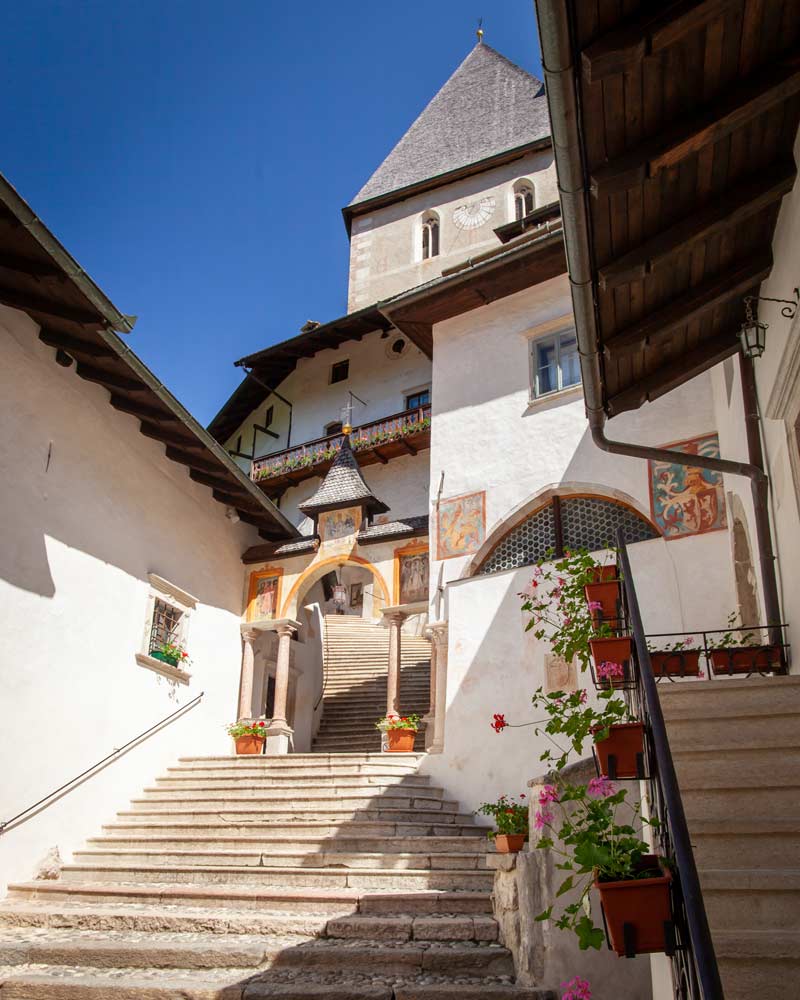
Driving back down from the mountains, we passed the actual processing part of the Melinda Apple Factory. By now, we were all well aware that there were likely no apples to see here – by this time of year, they were all hidden in those airtight caves deep in the mountains. Still, we stopped to watch a rather epic and immersive video on the apple caves while waiting to visit our final landmark, nearby Castle Thun.
Honestly, I’d overindulged a bit on grand architecture during this trip – it happens in Europe sometimes, and Val di Non has one of Italy’s highest concentrations of castles – and thankfully, the castle gods were listening. The English-speaking guide was busy elsewhere, so we got to skip the tour and stroll through the rooms of armour and art self-guided. I quickly retreated to the windswept balcony to take in the far-reaching vistas of my new obsession: apple orchards. Even as an atheist, the Old Testament’s story of temptation was starting to make far more sense.
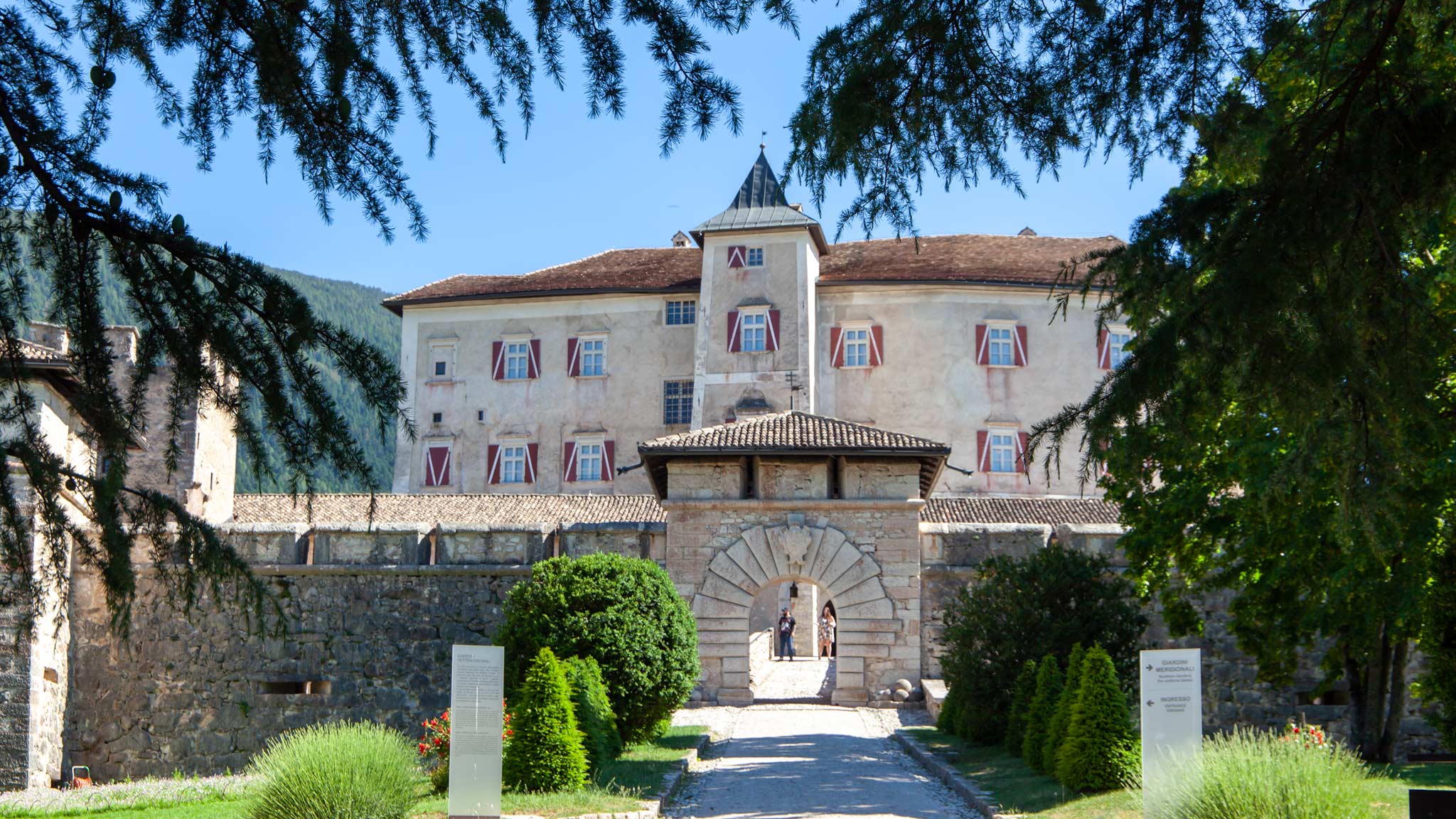
Is Italy’s Eden one of apples and artificial lakes?
Eager to return to nature, we rounded off our visit to Val di Non at the twin lakes of Coredo and Tavon. This pair of manmade pools form part of the water hydraulics systems in the region – a reminder of how Trentino is green in more ways than one.
With the snow-capped Dolomites looming beyond and the twinkling turquoise waters topped by people paddling on kayaks, these artificial pool could give the likes of Lake Como a run for its money.
Having only eaten about 27 courses in two days, it was time for my final bites of Trentino goodness, and Strada della Mela e dei Sapori delle Valli di Non e Sole had brought the goodies, quite literally.
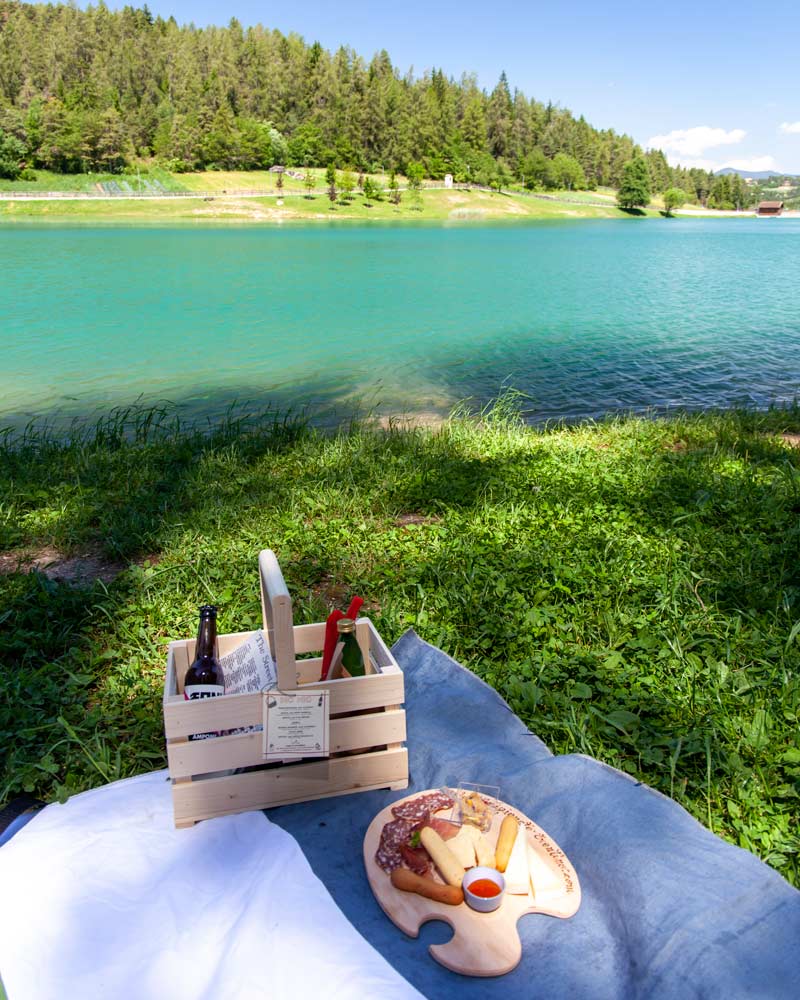
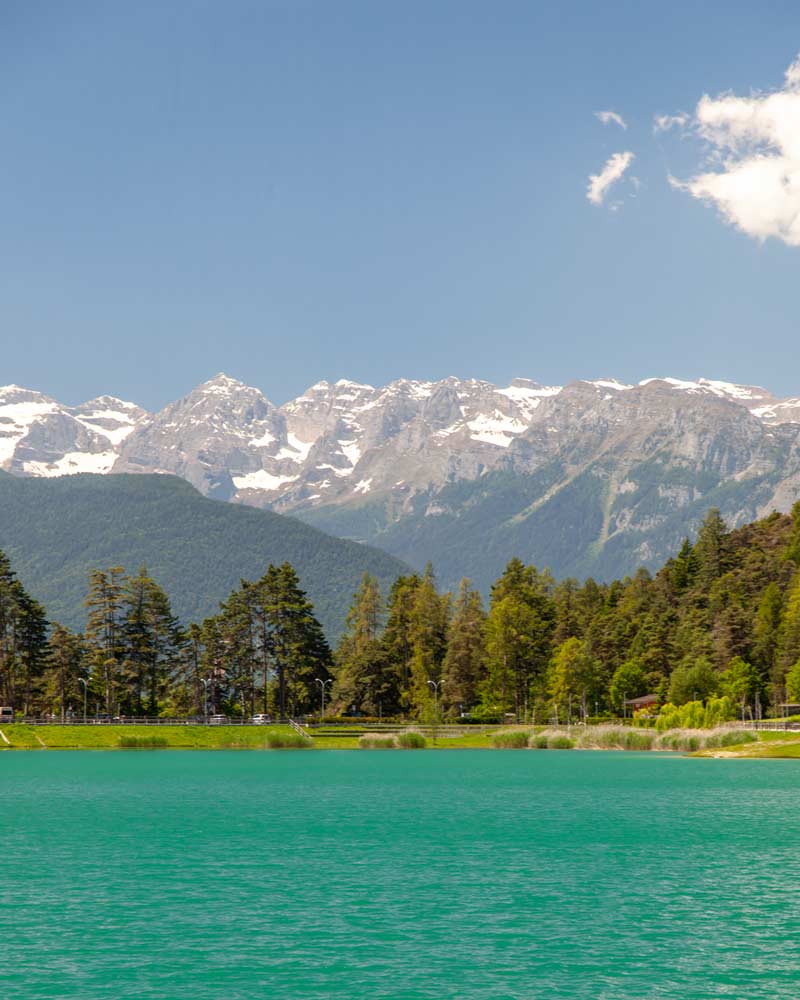
Providing picnic baskets of local treats, nearly everything in our reusable boxes was from Val Di Non, and most importantly, waste was minimal. As you’d imagine of an Italian experience picnic, cheeses and cured meats, honey and chunks of freshly baked bread, and wine and local craft beer to wash it all down were all present.
But this is Val di Non. So, resting in the base of the basket was, of course, an apple, apple juice, and apple crisps. I glanced over at Lisa, who I’d learned the day before had an apple allergy – not the best ailment in this part of the world – and I slid my beer over in exchange for her apple offerings.
I don’t think any of us had quite realised just how much apples would define our visit to a region that we’d mistakenly assumed was all saw-toothed, world-famous peaks. But Val di Non’s apples had done a number on us. The shape of this humble fruit would no longer make me think of Steve Jobs but rather of Trentino’s delightful emerald valley of castles, lakes, vineyards and seemingly never-ending orchards.
Lisa tossed me her apple. It echoed a perfect crunch as I sunk my teeth in. Here, where a bite of the fruit is encouraged, not forbidden, I’d found my own Eden.
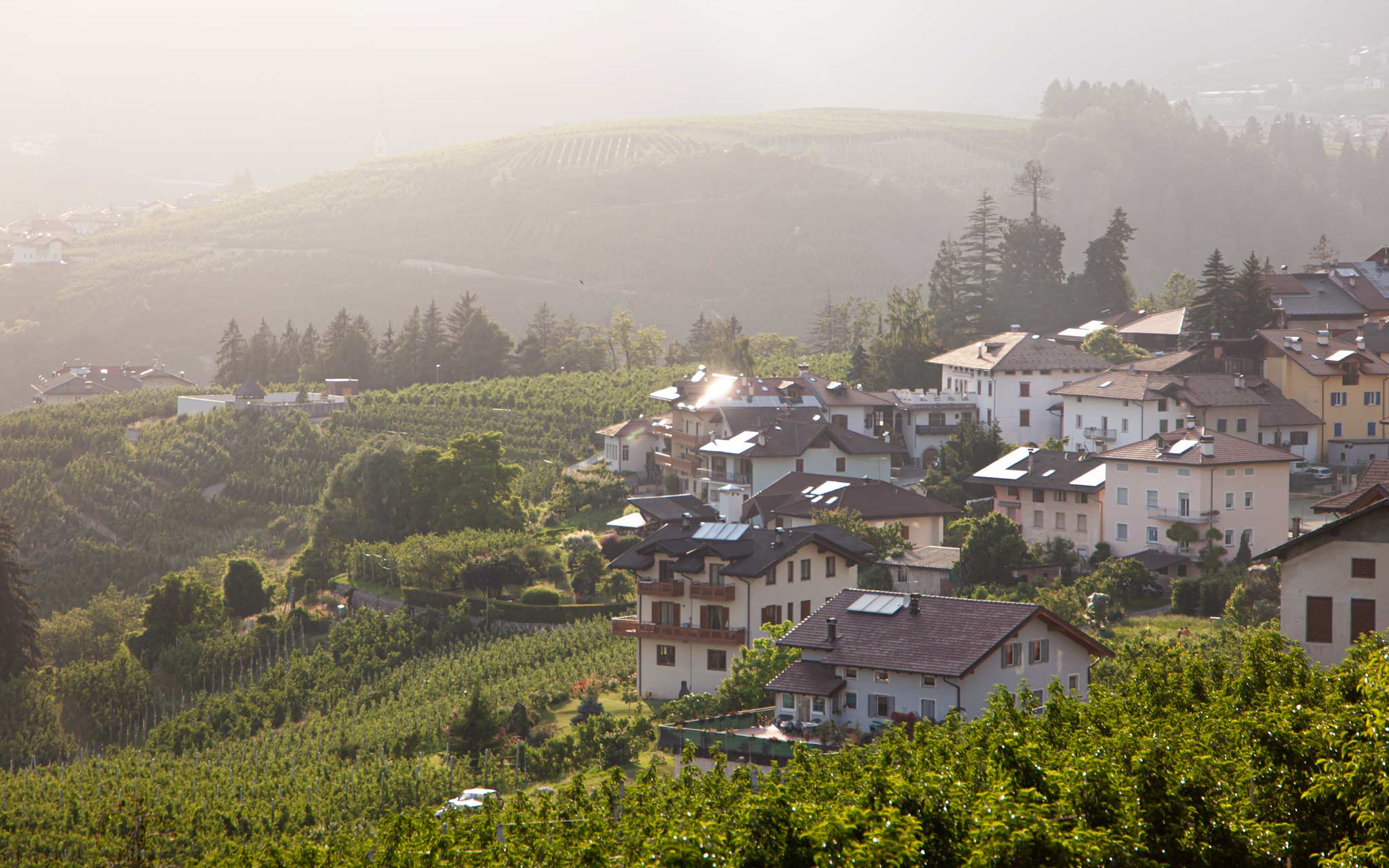
How to get to Trentino and Val Di Non: The nearest airport to Trentino is Verona airport, where direct buses go to Trento, or trains run from Verona city centre. Once in Trento, you can use local transport to connect to Val Di Non, although a car might make it easier to explore more of Europe’s hidden gems, which dot Trentino’s sixteen different districts.

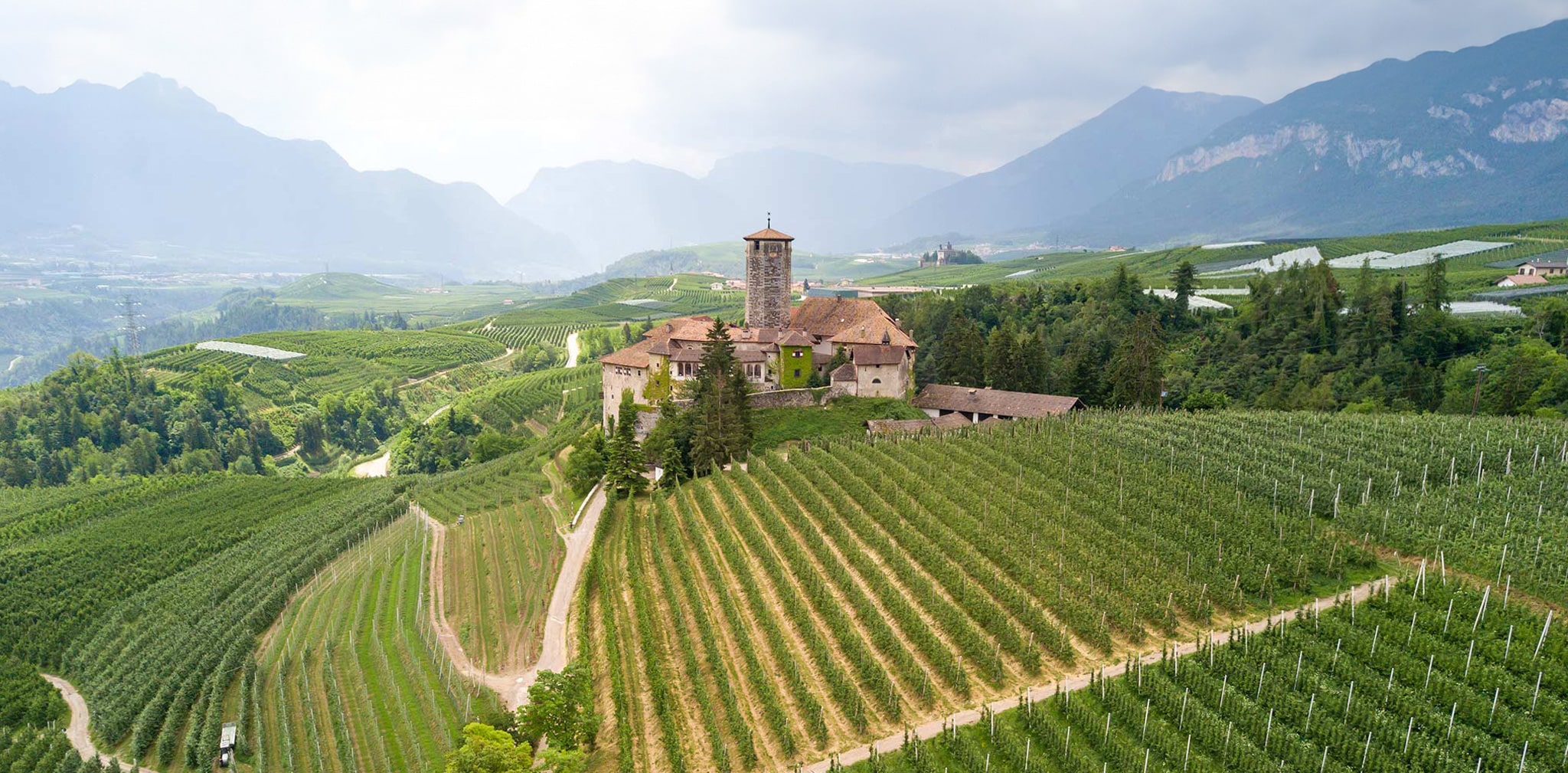



Stunning pictures, I’ve been there in person and still like your pics better! …Kidding of course, but it’s really a beautiful place, we make sure to visit every year on our roundtrip of North Italy. Speaking of which, if you liked the Trentino, you might want to check out its sister region, Alto Adige (or South Tyrol as they like to be called), especially the Venosta valley. Apples and castles as far as the eye can see (you seem to like them :D), and on top of that a thousand hiking spots with breathtaking view! Not to mention the food is excellent and the people aren’t afraid of a bit of banter either. Recommended!
Cheers, Jo
Hey Jo,
Thank you, and thank you for your tips! I’m yet to make it to South Tyrol but I’m hoping to remedy that in 2020.
Safe travels,
Dan
The way you write is so beautiful! The valley and the castles look stunning. Reading your post, it felt like I am actually there, experiencing each and every moment.
Thank you Stephanie!
Wow, these places look absolutely stunning. I wonder how I never heard about these places
Haha, I appreciated trading that apple juice for a beer! Loved this post, Dan, such a great recap from a great trip :)
;) I’m sure the beer was nicer too haha! Indeed, short but sweet taste of Trentino!
Amazing Lake Tovel landscapes, in this area, is more common to see mountains and beautiful forests. I miss that weather, Good trip!
Your pics are beautiful. It does look like a green paradise. Great post.
Thank you, beautiful corner of Italy!
The photos make me to want to visit there.
inspiring and interesting blog.keep writing :)
Thanks :)
The scenery alone of Trentino is absolutely breathtaking! As a hobbyist photographer, I fell in love with a lot of these photos. The mountains are majestic to say the least. It gives new appreciation to our world and where certain things come from. Very inspiring article, thank you for writing it!
Thank you, and yes, it’s a very photogenic spot :)
Beautiful voyage! I really liked this one! Mother nature made really good job.